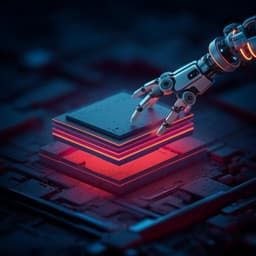Introduction
Deconvolution is a crucial yet challenging inverse problem in microscopy, especially when using complex PSFs like those generated by propagation-invariant beams (e.g., Airy and Bessel beams). These beams offer advantages such as extended field of view, improved resolution, and deeper penetration into scattering tissues. However, their complex side-lobe structures pose significant challenges for traditional deconvolution algorithms, often resulting in lower image contrast than conventional Gaussian-beam LSM. Existing deep learning approaches for deconvolution often require thousands of paired high-resolution ground truth images, making them impractical. This paper addresses these limitations by proposing an experimentally unsupervised deconvolution method based on deep learning. The method uses a physics-informed approach, leveraging the known PSF of the imaging system to generate simulated training data. This reduces the need for extensive experimental data acquisition and improves generalization across different samples. The method is designed to be robust to noise and model mismatch, making it suitable for various microscopy applications.
Literature Review
The paper reviews existing deconvolution techniques, highlighting the limitations of traditional methods like Richardson-Lucy deconvolution, especially when dealing with complex PSFs and noisy data. It discusses recent advances in deep learning for solving inverse problems in microscopy, including supervised end-to-end networks and model-based approaches. The authors point out that supervised methods require a large amount of paired training data, while model-based methods may not surpass the performance of the underlying numerical algorithms. Experimentally unsupervised networks, trained with simulated data, are presented as a promising alternative, but their application to structured PSFs in light-sheet microscopy remains underexplored. The authors position their work within this context, emphasizing the novelty of their physics-informed approach.
Methodology
The proposed method employs a generative adversarial network (GAN) consisting of a generator (G) and a discriminator (D). The generator learns the mapping from low-resolution (LR) images (convolved with the known PSF) to high-resolution (HR) images. The discriminator distinguishes between real HR images and the generator's output. The network is trained using three key priors: (1) the known PSF for generating simulated paired data; (2) controlled spatial and spatial-frequency content in the simulated images; and (3) experimental images to guide reconstruction and preserve perceptual quality. The training process minimizes a combined loss function including adversarial loss, L1 pixel loss, and perceptual loss using a pre-trained VGG-16 network. The network architecture is based on a 16-layer residual network (ResNet). The 2D deconvolution is computationally efficient and provides a close approximation to a 3D model. The method is experimentally unsupervised, requiring only a single light-sheet volume for training, and is applicable to different propagation-invariant beams with minimal retraining.
Key Findings
The proposed deep learning (DL) method outperforms traditional Richardson-Lucy (RL) deconvolution and RL with total variation (TV) regularization in both simulated and experimental data. In simulated data, DL achieves a 30-33 dB peak signal-to-noise ratio (PSNR), significantly higher than RL and TV (25-30 dB). DL shows superior robustness to model mismatch, tolerating up to threefold greater PSF variations than RL and TV. In experimental data using 200 nm beads, DL produces sharper, more Gaussian-like point spread functions (PSFs) and demonstrates super-resolution capabilities beyond the diffraction limit. The autocorrelation function and modulation transfer function (MTF) analyses confirm the superior performance of DL, showing that it better preserves high-frequency information. The method is demonstrated on various biological samples (mouse oocytes, embryos, brain tissue) and with different beam shapes (Airy and Bessel beams). A single trained network generalizes well across diverse samples and beam types. The training process is efficient, requiring only a small number of images from a single volume.
Discussion
The results demonstrate the effectiveness of the proposed experimentally unsupervised deconvolution method for improving image quality in light-sheet microscopy with propagation-invariant beams. The physics-informed approach significantly reduces the data requirements and improves the generalizability of the method. The superior performance compared to traditional deconvolution techniques highlights the potential of deep learning for addressing challenging inverse problems in microscopy. The robustness to noise and model mismatch makes this method suitable for various experimental settings. The open-source availability of the code promotes widespread adoption and further development in the field.
Conclusion
This study introduces a novel, experimentally unsupervised deep learning method for deconvolution in light-sheet microscopy using propagation-invariant beams. This method significantly improves image quality, surpasses traditional methods, requires minimal training data, and exhibits robustness to noise and model mismatch. The open-source code makes the method readily accessible, promoting wider application and further advancements in microscopy.
Limitations
The current implementation focuses on 2D deconvolution, which is an approximation to 3D. While the method demonstrates good generalization across different samples and beam types, further investigations are needed to explore its performance with even more diverse samples and imaging conditions. The reliance on prior knowledge of the PSF might limit applicability to scenarios with significant aberrations or unknown PSF characteristics.
Related Publications
Explore these studies to deepen your understanding of the subject.







